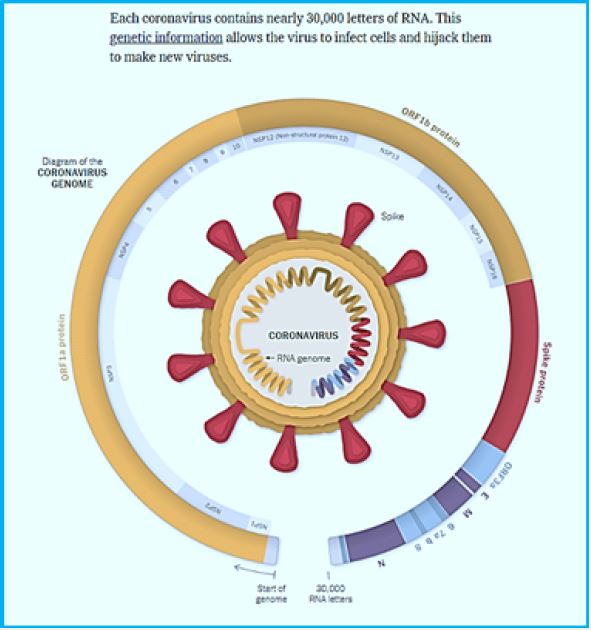Biography
Interests
Shimon Shatzmiller*, Rami Krieger, Inbal Lapidot & Galina Zats
Department of Chemical Sciences, Ariel University, 40700 Ariel, Israel
*Correspondence to: Dr. Shimon Shatzmiller, Department of Chemical Sciences, Ariel University, 40700 Ariel, Israel.
Copyright © 2021 Dr. Shimon Shatzmiller, et al. This is an open access article distributed under the Creative Commons Attribution License, which permits unrestricted use, distribution, and reproduction in any medium, provided the original work is properly cited.
The corona is raging in India, and the world is mobilizing to help. Several countries have promised to send oxygen and medical equipment to India, in the shadow of heartbreaking sightings of dead patients outside hospitals and crematoria working into the night. Biden: "Determined to help you as you helped us." Israel is also considering sending aid. Meanwhile, the crisis is exacerbating: a new world record of contagious. Indians are hoarding oxygen in homes. India's leader, Mr. Moody, who held mass rallies until a week and a half ago, received criticism: "Light a mourning bonfire in every home." His government is trying to censor tweets on Twitter, including from lawmakers.
COVID-19 has already yielded fatal consequences for a social, economic, and health-impaired society, with more than 107 million documented cases and 2.3 million deaths. Although this epidemic is far from over, we now have the tools to end it, with the most significant and fastest worldwide vaccine deployment. That we got there so fast is impressive, but next time we may not be so lucky. More vicious and deadly corona air wings are waiting in the wings. Thus, the world needs a universal vaccine against a virus [1].
If You Got Vaccinated: Here's Why You Can't Let Your Guard Down Yet to Stay Safe
How long does COVID vaccine protection last? Researchers still do not know for sure how long the
protection against the virus will last. This is because not all vaccines and not all viruses are the same. Related:
An annual COVID-19 vaccine is needed, presumably, along with a third shot to fight versions. Some, like
vaccine, horseradish, and soil, known as MMR, provide lifelong protection, while flu only seasonally. So far,
both Pfizer and Modern have reported that their vaccines offer protection for at least six months [2].
What is it all about? It's just a tiny change, the mistake in the replication. It might have happened at some point in the early stage of the outburst of the epidemic. One of the 30,000 "letters" in the genome of the virus (SARS-CoV-2) RNA was replaced from A (adenine} to G(Guanine) [3].


Today, this mutation, at position 23,403, has spread around the world. It is found in the vast majority of newly sequenced viruses and has become the center of the burning scientific question: Is the mutation so common because it helps the virus spread faster? Or is it just a coincidence?
More than 6 months into the epidemic, the virus's potential to develop in a more unpleasant direction - or, if we are lucky, to be more benign - is unclear. This is partly because it changes more slowly than most other viruses, which gives neurologists fewer mutations to learn. But some virologists also raise an intriguing possibility: that SARS-CoV-2 was already well-suited for humans when it burst onto the world stage in late 2019, after quietly improving its ability to infect humans in advance [4].
People who have received the two doses of the vaccines against COVID-19 [2a], The Pfizer- BioNTech or Moderna coronavirus will probably need an amplifier shot this year, senior executives at both drug companies said this week.
Pfizer CEO Albert Burla said people who received both doses would likely need a third injection within 12 months and may need an annual infusion afterward.
"There are vaccines ... like one fat polio is enough, there are vaccines like a pneumococcal vaccine and one fat is enough for adults, and there are vaccines like the flu you need every year," Borella said at the CVS Health Live event., "The Race for the Vaccine." "The COVID virus looks more like the flu virus than the polio virus."
A senior Moderna official said the United States is in a good position to switch to booster injections because of its vaccine activation, while many other countries are still receiving first vaccines.
"Some countries that have already achieved high vaccine coverage are likely to be willing to shift their focus to accelerators by 2022 and perhaps even start at the end of this year," Corinne M. Le Body, PharmD, Modern's main commercial. An officer, said during a conversation with investors, Business Insider reported [5].
Coronavirus: 'The double mutant' COVID variant found in India
Unfortunately, Israel has registered eight cases of a coronavirus variant first identified in India and believes that the Pfizer/BioNTech vaccine is at least partially effective against it, an Israeli health official said on Tuesday [6].

The new version of the "double mutation" of the coronary virus has been discovered from specimens collected in India.
Officials are examining whether the version in which two mutations unite in the same virus may be more contagious or less affected by vaccines.
Some 10,787 samples from 18 Native American countries also showed 771 cases of known variants - 736 of Britain, 34 of South Africa and one Brazilian.
Officials claim that the versions are not related to the rise in portfolios in India.
India on Wednesday reported 47,262 cases and 275 deaths - the sharpest daily rise this year.
The Indian consortium SARS-CoV-2 in the field of genomics (INSACOG), a group of 10 national laboratories under the Ministry of Health in India, performed a genomic sequence on the latest samples. A genomic sequence is a test process for mapping the genetic code of an organism - in this case, the pathogenic virus.
In RNA viruses, the genetic code of the virus works like its instruction manual. Mutations in RNA viruses are common but most are insignificant and do not cause a change in its ability to transmit or cause severe infection. But some mutations, such as the one in the British or South African dynasties, can cause the virus to become more contagious and in some cases even more deadly [8].
Virologist explained that a dual mutation in key regions in the virus' spike protein may increase risks, (allow the virus to escape from the immune system).
The prick (spike) protein is the part of the virus envelope used to infiltrate the victim's cells.
Unique Features of the Indian Variant
Sharp Rise in India 'Worrying' COVID Cases
The government said that analysis of the samples collected from the state of Maharashtra in western India showed "an increase in the sample fraction with the E484Q and L452R mutations" compared to December last year.
"Such dual mutations provide immune escape and increased infectivity," the health ministry said in a statement.
Dr Jamail added that "there may be a separate lineage in India with the L452R and E484Q mutations coming together".
The mutations in the spike gene can make the virus inherently "better" at infecting people or can help the
virus escape neutralizing antibodies.
This means that if the virus changes "correctly", it can re-infect someone who has already recovered from COVID-19.
But scientists say recurrent innovations will be very mild compared to primary infections in individuals who have been properly vaccinated or have already recovered from a previous case of COVID-19.
But if the virus can use re-disinfection to spread, then it would be "invading" herd immunity, says Dr. Jeremy Camille, a virologist at the University of Louisiana Health Sciences Center, Report. (Herd immunity occurs when a large portion of the community becomes disease-resistant. Through vaccination or through mass spread of the disease) [9].
It endangers the most vulnerable people at risk of severe diseases, as the virus can pass through the herd to reach them.
He said unlike some other versions, India's new dual version is not expected to be more lethal or transferable by nature, but more data is needed to be sure.
Read more about the risks of the new COVID-19 version in the India line
The Government of India denies that the increase in cases is related to mutations.
"Although India's VOCs [variants of concern] are a new dual-mutation variation in India, these have not been detected in sufficient numbers to make direct contact or explain the rapid increase in cases in some countries," the Ministry of Health said.
The latest report came after a number of experts asked the government to step up genome sequencing efforts.
"We are obliged to keep an eye on it all the time and make sure none of the versions of the concern spread to the people. The fact that it is not happening now does not mean it will not happen in the future. And we must to make sure we get the evidence early enough," the month [8].
Modified viruses appear to be more contagious or cause more severe diseases than other circulating
coronaviruses. This group of coronaviruses was discovered in the UK, where it was called the 202012/01
concern variant. The version is also known as 20I / 501Y.V1, or is simply called B.1.1.7.
Coronaviruses from the B.1.1.7 lineage are thought to be 30 to 50 percent more contagious than other variants currently in circulation. They may be more lethal, based on studies in the UK.
After the discovery in December it was quickly discovered in other countries and rose exponentially. It doubles itself (in the United States) every ten days. Preliminary evidence suggests that B.1.1.7 is about 55 percent more lethal than other versions. But tests show that the vaccines are still working against it.
B.1.1.7 appears to be more contagious because of many mutations in its spike protein, which the coronary virus uses to attach to cells [7].
"Version B.1.617 is common to the west in Maharashtra and Gujarat. Version B.1.1.7 is common in the north
in Punjab. In southern India, the one with the N440K mutation is common but it seems quiet. Eventually,
one of the other versions will get there. And in the east, "We do not have a specific version, but the South
African version is quite common in Bangladesh, causing almost 80% of the cases to be transmitted to India.
This will interfere with the AstraZeneca vaccine."
The dual mutation refers to specific changes, among others, marked by E484Q (glutamate is replaced by glutamine in the 484th place of the spike protein) and L452R (replacement of leucine by arginine at the 452nd position).
Both variations are being investigated for giving the virus the ability to evade past infections, even vaccines. The L452R is also in a spread version in California, USA, where it was involved in a major eruption earlier this year. VOC.
The British version, B.1.1.7, was approved as a more transmissive and was similarly transmitted to a resurgence of cases across the UK.

The 'double mutant' COVID strain may have become the most prevalent strain in India's recent cases of infection.(credit ref. [10])According to an analysis of genome sequence data submitted by Indian scientists in a global open repository, a report in the Hindustan Times said that 24 percent was the most common strain found in samples tested in the 60 days leading up to April 2nd.The B.1.617 strain, also known as the "double mutation" strain, was first identified on October 5, 2020, and has begun to appear more frequently since January 2021.A second scientist involved in the sequencing efforts said more evidence is needed to link mutations to case trends. "The dual mutant version is on the rise in the country. But the increase in cases cannot be attributed solely to the mutant versions. Human behavior plays a very important role in transmission; in the UK when the new version began to spread a control over proliferation," said Dr. CCMB), one of the ten laboratories in Insacog [11]. India on Thursday recorded 53,476 new cases of COVID-19, marking the highest one-day rise in cases since October 23, according to CNN data from the Indian Ministry of Health. The state reports more than 35,000 new cases daily for more than a week, with a recent resurgence in cases after falling in January and February this year. Randeip Galeria, director of the Institute of Medical Sciences of All India, told CNN on Wednesday that "this is the beginning of a second wave" [12].
Five Cases of 'Double Mutant' Variant First Seen in India Also Found in California
The 'double mutation' introduces two separate spike protein substitutes on its gene at E484Q and L452R.
(For a non-expert guide on what these alpha-numeric terms mean).


It is not that these point mutations are sufficient to affect different effects. Instead, the society has these mutations that determine their infectiousness, venom, and immune evasion. For example, version B.1.1.7 has a bunch of other mutations (eight substitutes in other parts of the spike envelope protein and three deletions); Version B.1.351 has three replacements in the RBD and six in other parts of the spike, in addition to other deletions. Version P.1 includes a total of 10 replacements - three in RBD - plus other deletions (credit ref [13]).
The changes in the structure of the prickly protein confer enhanced pollution, venom, and / or the ability to escape neutralizing antibodies in the human body. There is ample evidence of how these mutations behave separately - but what we know about how they work together is limited [14].

Bibliography

Hi!
We're here to answer your questions!
Send us a message via Whatsapp, and we'll reply the moment we're available!